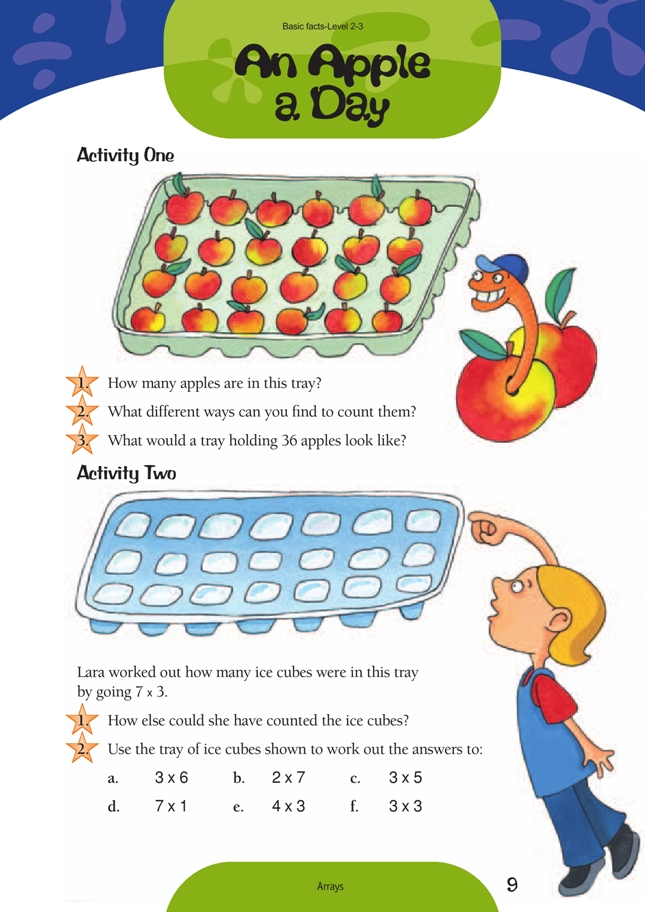This is a level 3 number activity from the Figure It Out series. It relates to Stage 6 of the Number Framework.
A PDF of the student activity is included.
Click on the image to enlarge it. Click again to close. Download PDF (202 KB)
use arrays to solve multiplication facts
Activities One and Two
The array view is probably the most powerful visual model for multiplication. It has important connections to measuring area and volume and to finding possible outcomes in probability.
Given an array, as in the apple tray example, students will demonstrate various strategies for counting the objects. These progress in sophistication:
i. One-by-one counting
ii. Skip counting of rows or columns, for example, 4, 8, 12, …
iii. Equal additions, for example, 4 + 4 + 4 + 4 + 4 + 4
iv. Use of multiplication facts, for example, 6 x 4.
The above stages constitute a developmental sequence for students that can help teachers design appropriate interventions. Students at the first stage need experience with stressed and then skip counting, that is, 1, 2, 3, 4, 5, 6, 7, 8, 9, … to 3, 6, 9, … Students at the third stage need experience with arrays being masked. For example:
Where students are given instructions to create arrays for a given number of objects, say 24, you can develop the use of pattern by recording their results on a table:
Students may notice that a square array can be made only for numbers like 9, 16, and 25.
Answers to Activities
Activity One
1. 24
2. Answers will vary but will be based on addition and multiplication.
3. Answers will vary, for example, rows of 6 x 6, 4 x 9, or 3 x 12.
Activity Two
1. Various addition methods, such as 3 + 3 + 3 + 3 + 3 + 3 + 3 = 21
2. a. 18
b. 14
c. 15
d. 12
e. 12
f. 9


